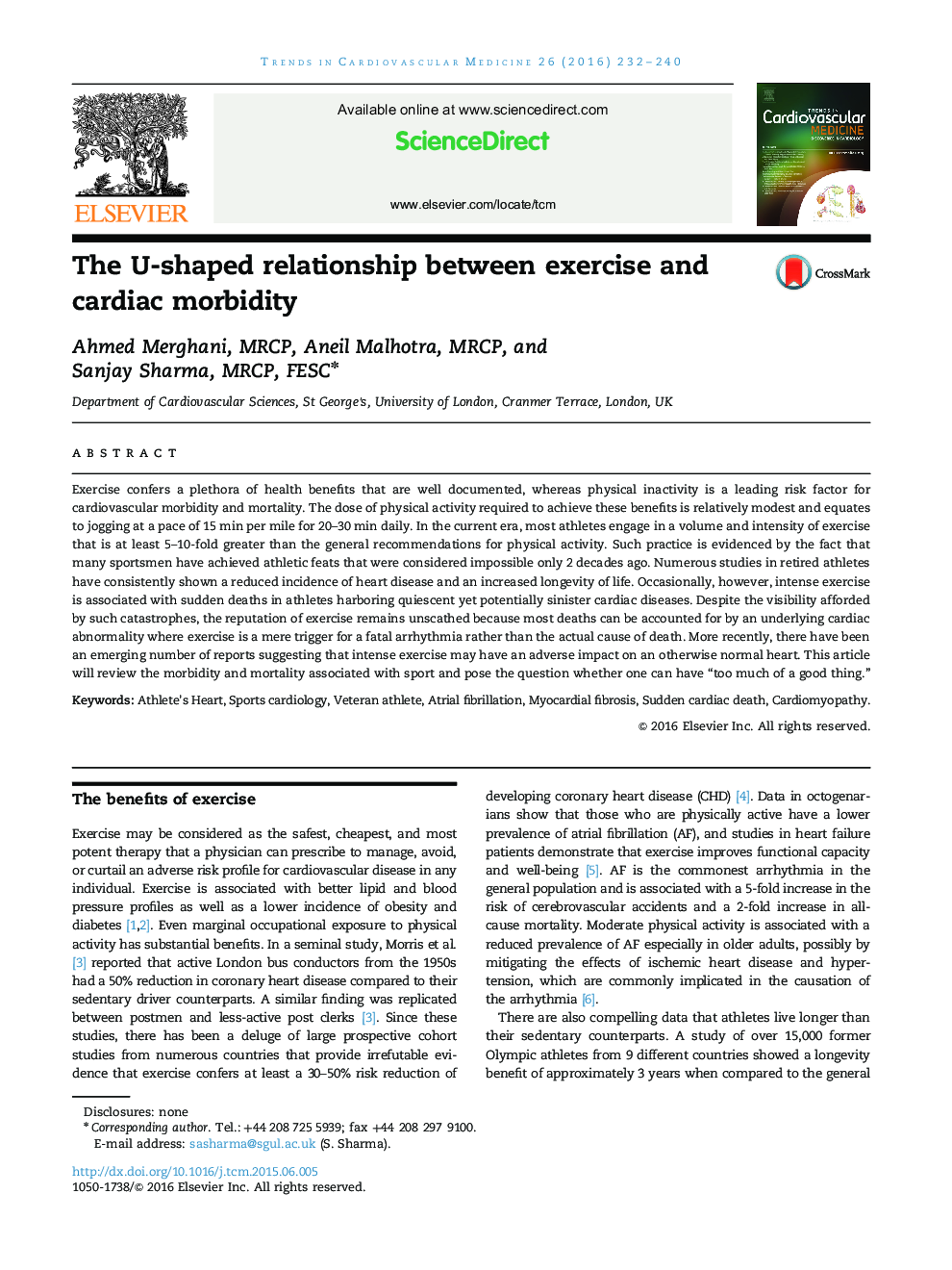| Article ID | Journal | Published Year | Pages | File Type |
|---|---|---|---|---|
| 3031190 | Trends in Cardiovascular Medicine | 2016 | 9 Pages |
Exercise confers a plethora of health benefits that are well documented, whereas physical inactivity is a leading risk factor for cardiovascular morbidity and mortality. The dose of physical activity required to achieve these benefits is relatively modest and equates to jogging at a pace of 15 min per mile for 20–30 min daily. In the current era, most athletes engage in a volume and intensity of exercise that is at least 5–10-fold greater than the general recommendations for physical activity. Such practice is evidenced by the fact that many sportsmen have achieved athletic feats that were considered impossible only 2 decades ago. Numerous studies in retired athletes have consistently shown a reduced incidence of heart disease and an increased longevity of life. Occasionally, however, intense exercise is associated with sudden deaths in athletes harboring quiescent yet potentially sinister cardiac diseases. Despite the visibility afforded by such catastrophes, the reputation of exercise remains unscathed because most deaths can be accounted for by an underlying cardiac abnormality where exercise is a mere trigger for a fatal arrhythmia rather than the actual cause of death. More recently, there have been an emerging number of reports suggesting that intense exercise may have an adverse impact on an otherwise normal heart. This article will review the morbidity and mortality associated with sport and pose the question whether one can have “too much of a good thing.”
